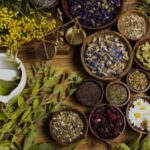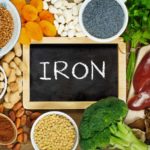5 Best Foods To Improve Insulin Resistance
5 best foods to improve insulin resistance? – If you’re living with insulin resistance, the good news is that it doesn’t have to be a lifelong struggle.
Through consistent, healthy lifestyle choices—such as regular physical activity and a nutrient-rich diet—you may be able to reduce or even reverse insulin resistance over time.
Insulin resistance is a metabolic condition in which your body’s cells, particularly those in the muscles, fat, and liver, stop responding effectively to insulin, the hormone produced by the pancreas that helps move glucose from your bloodstream into your cells for energy.
As a result, your pancreas has to produce more insulin to keep your blood sugar levels within a normal range. This increased demand places extra strain on your pancreas and can gradually lead to elevated blood sugar levels, prediabetes, or even Type 2 diabetes if not managed early.
One of the most powerful ways to improve insulin sensitivity is through your diet. The foods you eat directly affect how your body handles glucose and insulin.
Foods that cause quick spikes in blood sugar levels, such as those high in refined sugar and simple carbohydrates, can overwhelm your system and exacerbate insulin resistance. Consistently consuming these types of foods forces the pancreas to overproduce insulin, which can eventually make your cells even more resistant to its effects.
According to Shelby Hoskins, MS, RD, LMNT, CDCES, a registered dietitian and certified diabetes educator with Nebraska Medicine, adopting a diet that’s low in simple carbs and rich in whole, unprocessed foods can greatly support your body’s ability to regulate blood sugar and use insulin more efficiently.
“Following a diet lower in refined or simple carbohydrates can help your body better manage sugar levels and may improve your insulin resistance,” Hoskins explains.
So, what should you eat more of? A balanced and varied diet that includes whole grains, fresh vegetables and fruits, lean proteins, healthy fats, and dairy can slow down digestion, support better blood sugar control, and reduce spikes in insulin levels. This kind of diet leads to more sustained energy levels and gradual improvements in insulin sensitivity.
An effective yet often overlooked strategy to manage insulin resistance is learning how to combine your foods smartly.
One helpful trick? Pairing carbohydrate-rich foods with a source of protein or healthy fat. This simple habit can significantly slow down the absorption of sugar into your bloodstream, helping to maintain steady energy and minimize insulin spikes.
For example, instead of eating an apple on its own, pair it with a spoonful of peanut butter. Enjoy whole grain crackers with a slice of cheese, or try a banana with a handful of almonds. These combinations not only taste great but also help promote better blood sugar control and insulin sensitivity.
According to Shelby Hoskins, MS, RD, LMNT, CDCES, a registered dietitian and certified diabetes educator with Nebraska Medicine, you don’t have to completely eliminate certain foods to manage insulin resistance. Instead, it’s about being mindful of how individual foods affect your blood sugar—and how to balance them effectively with other choices.
“While you do not need to eliminate any foods from your diet completely, the key is to be aware of how certain foods affect your blood sugar levels and how to balance or offset those with other food choices,” says Hoskins.
To support a more stable energy supply and help your body respond better to insulin, she recommends incorporating a wide variety of nutrient-dense foods into your meals—particularly those that are rich in fiber, protein, and healthy fats.
5 Best Foods To Improve Insulin Resistance
Let’s take a closer look at one of the 5 best foods to improve insulin resistance: complex carbohydrates.
- Complex Carbohydrates
Complex carbohydrates are among the most effective food groups for improving insulin sensitivity. Unlike simple carbs that are quickly digested and spike blood sugar, complex carbs break down more slowly, providing sustained energy and reducing the demand for insulin. They’re also packed with dietary fiber, which slows glucose absorption and helps maintain digestive health.
When shopping for whole grains and complex carbs, Hoskins suggests reading food labels closely. “The first ingredient should start with ‘whole,’ such as whole wheat or whole oats,” she explains. This ensures you’re choosing truly whole grains rather than refined or enriched alternatives.
Here are some excellent sources of complex carbohydrates to include in your insulin-resistance-friendly diet:
- Whole wheat
- Oats
- Brown rice
- Quinoa
- Whole grain breads
- Whole grain pastas
- Whole barley
- Millet
- Bulgar wheat
- Buckwheat
- Whole rye
- Whole corn
Adding these foods to your daily meals—especially when paired with lean proteins or healthy fats—can support stable blood sugar levels, reduce hunger spikes, and improve your metabolic health.
Remember, a balanced approach is key. As you incorporate the 5 best foods to improve insulin resistance into your lifestyle, aim for variety and moderation. Combine complex carbs with healthy proteins, eat plenty of fiber-rich fruits and vegetables, and stay active.
These daily habits not only help in managing insulin resistance but can also lead to long-term improvements in overall health and energy levels.
- Lean Proteins
When it comes to the 5 best foods to improve insulin resistance, lean proteins play a crucial role. These foods help slow the absorption of glucose when eaten with carbohydrates, making them ideal for blood sugar control. They also support muscle maintenance and repair, which is important for improving insulin sensitivity—especially when paired with regular physical activity.
Here are some of the top lean protein sources to include in your meals:
- Lean cuts of red meat (such as sirloin or tenderloin)
- Skinless chicken and turkey
- Fatty fish like salmon, tuna, and trout (rich in omega-3s)
- Plant-based proteins such as beans, lentils, and legumes
- Nuts and seeds (in moderation due to calorie density)
- Nut butters (like almond or peanut butter, ideally with no added sugar or hydrogenated oils)
Including these protein-rich foods in your meals helps create balanced blood sugar responses and may reduce cravings throughout the day.
- Fruits
Fruits are naturally sweet, but that doesn’t mean they’re off-limits. In fact, they’re rich in fiber, antioxidants, vitamins, and minerals—all of which contribute to better overall health and metabolic function.
When managing insulin resistance, the key is choosing fruits wisely and being mindful of portion sizes, especially with higher-sugar options.
According to Hoskins, some lower-carbohydrate fruit options that are better for insulin resistance include:
- Berries: Raspberries, strawberries, blueberries — these are low in sugar and high in fiber and antioxidants.
- Melons: Watermelon and cantaloupe offer hydration and vitamins with fewer carbs per serving.
- Stone fruits: Peaches and nectarines can be satisfying and fiber-rich choices.
- Citrus fruits: Oranges (in moderation) provide vitamin C and fiber.
- Tropical fruits: Mangoes and pineapple should be enjoyed in smaller portions due to their higher sugar content.
A helpful trick is to pair fruit with a protein or healthy fat—such as apple slices with almond butter or berries with Greek yogurt—to slow sugar absorption and reduce insulin spikes.
- Vegetables
Vegetables are a cornerstone of a healthy, insulin-friendly diet. They’re low in calories, high in fiber, and packed with essential nutrients. However, not all vegetables affect blood sugar equally. Non-starchy vegetables are the best options for improving insulin sensitivity because they have minimal impact on glucose levels.
Some top picks include:
- Dark leafy greens like spinach, kale, and Swiss chard
- Cruciferous veggies such as broccoli, cauliflower, and Brussels sprouts
- Colorful options like bell peppers, tomatoes, and carrots
- Hydrating veggies like cucumbers and zucchini
While starchy vegetables like potatoes and sweet potatoes are nutritious, they should be consumed in moderation if you’re working to stabilize blood sugar.
- Dairy and Healthy Fats
Healthy fats and certain dairy products can also support insulin sensitivity by helping regulate blood sugar levels and keeping you full longer. The key is to choose unprocessed options and avoid products high in added sugars.
Here are some smart choices from this category:
- Peanut butter (opt for natural varieties with no added sugar)
- High-protein, low-carb yogurt – Greek yogurt is a great example
- Cheeses – in moderation, cheese offers calcium and protein
- Nuts and seeds – almonds, walnuts, chia seeds, and flaxseeds
- Hard-boiled eggs – a portable, protein-rich snack
These foods can be paired with fruits or whole grains to create meals that are not only satisfying but also supportive of metabolic health.
Building a Plate with the 5 Best Foods to Improve Insulin Resistance
Improving insulin resistance doesn’t require extreme diets or cutting out entire food groups. Instead, it’s about making smarter, balanced food choices and being intentional about combining nutrients.
A balanced plate should include complex carbohydrates, lean proteins, fiber-rich fruits and vegetables, and healthy fats—all of which work together to keep blood sugar stable and insulin levels in check.
By incorporating these 5 best foods to improve insulin resistance into your daily meals and snacks, you’re giving your body the tools it needs to heal, stabilize energy, and possibly reverse insulin resistance over time.
Foods to Limit When Managing Insulin Resistance
While adding the 5 best foods to improve insulin resistance into your daily routine is crucial, it’s equally important to be mindful of the foods that can worsen the condition. Certain foods spike blood sugar rapidly or contribute to inflammation and weight gain, all of which can place additional strain on your body’s ability to manage insulin.
To support insulin sensitivity and protect your metabolic health, try to limit the following:
- Sugary Beverages: Drinks like regular soda, sweetened iced tea, lemonade, and even some fruit juices can cause rapid spikes in blood glucose. These beverages are high in added sugars with little to no nutritional value.
- Foods Rich in Saturated Fats: Items such as whole milk, butter, coconut oil, and fatty cuts of red meat can contribute to insulin resistance if consumed in excess.
- Sugary Treats and Desserts: Candy, cakes, cookies, and ice cream are high in refined sugars and simple carbohydrates that disrupt blood sugar control.
- Refined Carbohydrates: White bread, white rice, pasta made from refined flour, and other highly processed grain products lack the fiber that helps slow down sugar absorption.
- Packaged Snacks and Fast Foods: Many of these are ultra-processed, high in sugar, sodium, and unhealthy fats—all of which can negatively impact insulin function.
- Canned Fruits in Syrup: These may seem healthy, but canned fruits packed in syrup often contain large amounts of added sugar. Opt for varieties labeled “no added sugar” or choose fresh/frozen fruits instead.
- Fried Foods: Fried chicken, fries, and other deep-fried items are calorie-dense and often high in trans fats that can worsen inflammation and insulin resistance.
- Alcohol: Excessive drinking can interfere with blood sugar regulation and liver function. If you choose to drink, do so in moderation and always with food.
Tips for Creating a Balanced, Insulin-Friendly Diet
Making dietary changes to support insulin resistance doesn’t have to be overwhelming. The process is more sustainable when approached step by step. As Shelby Hoskins, MS, RD, LMNT, CDCES, explains, small, consistent changes can lead to long-term improvements.
Here are some practical tips to get started:

Instead of overhauling your entire diet overnight, begin by focusing on just one or two changes. For example:
- Add 2–3 servings of non-starchy vegetables to your meals daily.
- Replace one sugary beverage with water or herbal tea.
- Choose whole-grain bread instead of white.

Give yourself a timeframe—maybe a week or two—to work on one habit before adding another. Once the first change becomes second nature, build upon it with a new goal.

You’re human, and there will be slip-ups. If you have a day when you indulge or veer off course, don’t dwell on it. The key is to reset the next day and get back on track with your healthy habits.
Final Thoughts: Supporting Your Health Through Nutrition
Managing insulin resistance is about finding balance, not perfection. By integrating the 5 best foods to improve insulin resistance—like whole grains, lean proteins, fiber-rich fruits and vegetables, and healthy fats—while limiting foods that spike your blood sugar, you’ll be taking important steps toward improving your insulin sensitivity and overall health.
With thoughtful planning, support, and patience, these lifestyle changes can become sustainable habits that empower you to live a healthier, more energetic life.

A graduate of Computer Science and Information Management Technology. Diploma – Caregiving, Certificates – Dementia and Diabetes Awareness and Management. A researcher, blogger, songwriter, singer and acoustic guitarist. Born in an environment where natural talents such as healing are imparted at our natural birth. This natural talents of healing is the result of our genetic inheritance and the training from family environment.



















